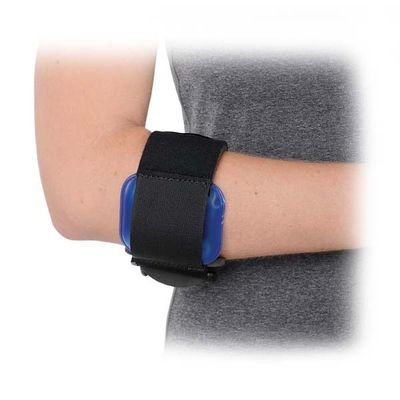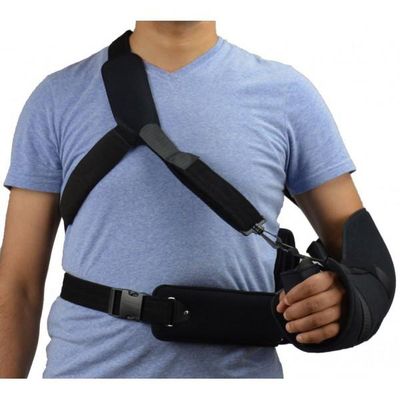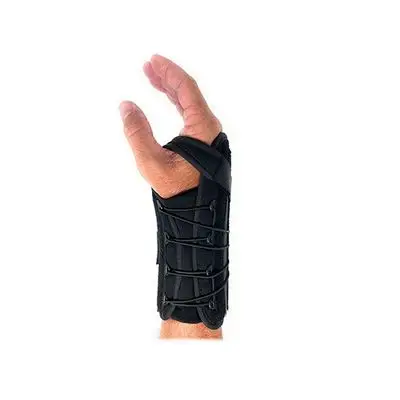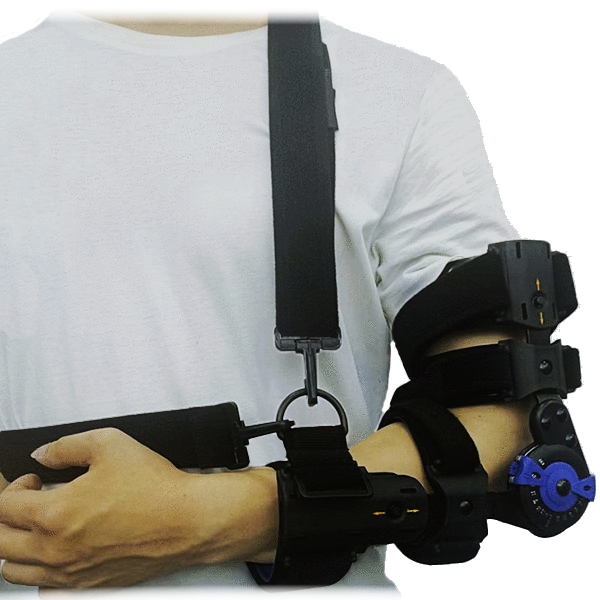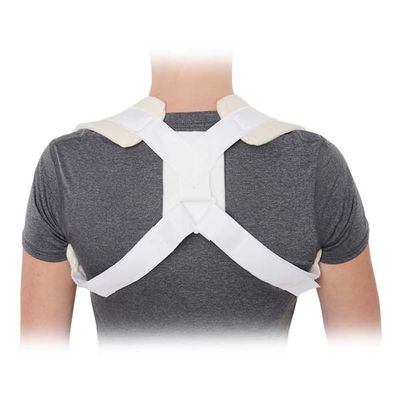Table of Contents
Wrist Brace
A Wrist Brace is an orthopedic device designed to support, stabilize, and immobilize the wrist joint. It is commonly used to treat a variety of conditions involving the wrist, including injuries, chronic conditions, or post-surgical recovery. The primary purpose of a wrist brace is to reduce movement in the wrist to allow for healing and prevent further injury, while still allowing functional use of the hand and fingers.
Key Features of a Wrist Brace
Wrist Stabilization
- The main function of a wrist brace is to provide support and stabilization to the wrist joint, limiting movement to reduce strain on injured or inflamed tendons, muscles, and ligaments. This helps promote healing and reduces the risk of aggravating the injury.
Adjustable Straps for a Custom Fit
- Most wrist braces come with adjustable straps that allow the wearer to customize the fit, ensuring that the brace is snug but comfortable. These straps help keep the brace securely in place, offering continuous support during daily activities.
Rigid or Semi-Rigid Design
- Wrist braces can range from rigid designs that include hard plastic or metal stays to semi-rigid designs made from flexible materials such as neoprene or foam. Rigid braces are more commonly used for acute injuries, fractures, or post-surgical recovery, while semi-rigid designs are often used for chronic conditions like arthritis or carpal tunnel syndrome.
Breathable and Comfortable Materials
Most wrist braces are made from lightweight, breathable materials like neoprene or nylon, which help wick moisture away from the skin and prevent irritation. Many braces also feature foam padding to enhance comfort.
Range of Motion Limitation
- Depending on the condition being treated, wrist braces can limit the wrist’s range of motion to varying degrees. Some braces fully immobilize the wrist, while others allow for limited movement to prevent stiffness while providing support.
Conditions Commonly Treated with a Wrist Brace
- Carpal Tunnel Syndrome: One of the most common uses for a wrist brace, especially at night, is to relieve pressure on the median nerve in the wrist, which helps alleviate the pain and numbness associated with carpal tunnel syndrome.
- Wrist Sprains or Strains: A wrist brace can provide the necessary support to prevent further injury in the case of a sprain or strain, reducing the strain on overstretched or torn ligaments.
- Post-Surgical Recovery: After surgeries like wrist fracture repairs or tendon releases, a wrist brace may be prescribed to help immobilize the wrist and protect it during recovery.
- Tendonitis: For those suffering from inflammation of the tendons in the wrist, a brace can help by limiting wrist movement, thus allowing the tendons to heal.
- Arthritis: A wrist brace can provide stability and support for individuals with arthritis, helping to reduce pain and stiffness in the joints.
Benefits of Using a Wrist Brace
- Pain Reduction: By stabilizing the wrist and reducing unnecessary movement, wrist braces can help alleviate pain caused by inflammation or injury.
- Improved Healing: Immobilization prevents further strain on the injured area, allowing tissues to heal faster and more effectively.
- Prevention of Further Injury: A brace provides protection against accidental overuse or re-injury while the wrist is healing, particularly in situations where the individual might be prone to aggravating the condition.
- Ease of Use: Wrist braces are designed to be easy to put on and take off, making them a convenient option for those needing continuous support throughout the day.
Types of Wrist Braces
- Standard Wrist Brace: Provides basic support and immobilization for general wrist injuries or chronic conditions.
- Wrist Splint: Often includes a rigid component that offers more complete immobilization, typically used for fractures or severe sprains.
- Thumb Spica Brace: Includes additional support for the thumb, used in conditions like De Quervain’s tenosynovitis.
Considerations
- Correct Fit: It’s essential to select the right size for optimal comfort and effectiveness. An ill-fitting brace may cause discomfort or fail to provide adequate support.
- Duration of Use: Wearing a brace for extended periods without a doctor’s recommendation could lead to stiffness or weakened muscles, so it’s important to follow professional guidance regarding the duration of use.
In conclusion, a Wrist Brace is an effective, non-invasive solution to manage wrist injuries, chronic conditions, or post-surgical recovery, offering the support and protection needed for proper healing while allowing for everyday functionality.
Hinge R.O.M. Elbow Brace_Universal
A Hinge R.O.M. Elbow Brace is an orthopedic device designed to provide support and controlled movement for the elbow joint, primarily used during rehabilitation from surgery or injury. This brace allows for the adjustment of the elbow's range of motion (R.O.M.), helping patients progressively regain mobility while ensuring stability and preventing re-injury.
SUGGESTED HCPC: L3760 and L3761
ORDER NUMBER: 2320-R, 2330-L
SIZE: Right & Left Universal (see sizing chart to the left)
PRODUCT HIGHLIGHTS:
• Plush padding for comfort fit
• Adjustable arm contours for exact fit
• Telescopic length adjustments at forearm and biceps
• Adjustable strapping system
INDICATIONS:
Soft tissue strains / repairs, Post-op surgery.
SUGGESTED HCPC: L3760 and L3761
